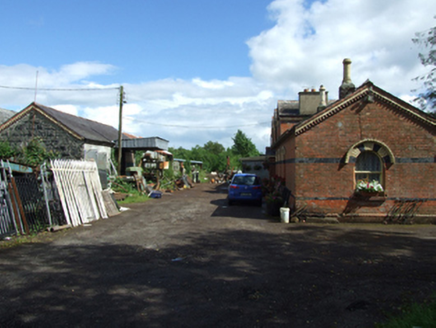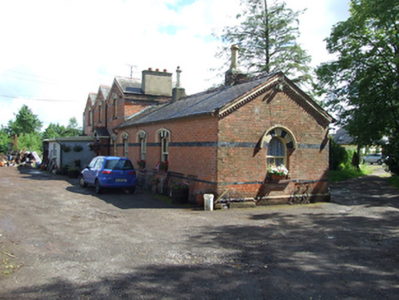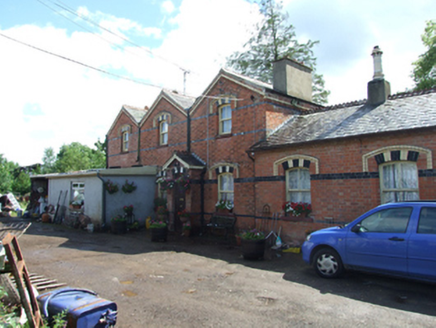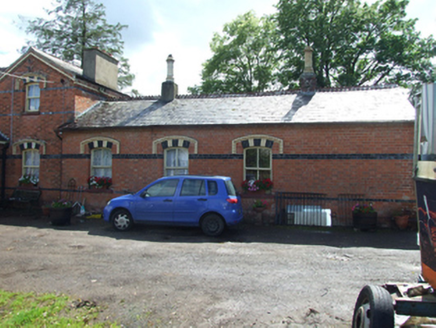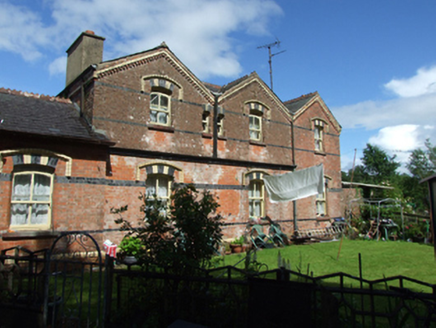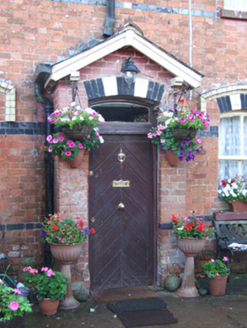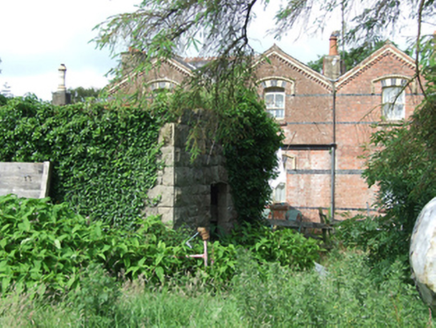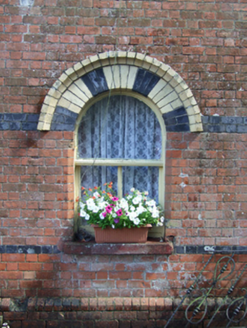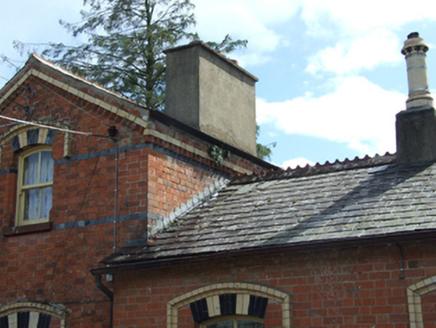Survey Data
Reg No
40401005
Rating
Regional
Categories of Special Interest
Architectural, Artistic, Social
Previous Name
Ballyconnell Station
Original Use
Railway station
In Use As
House
Date
1880 - 1890
Coordinates
227425, 317892
Date Recorded
11/07/2012
Date Updated
--/--/--
Description
Detached three-bay single-storey and three-bay two-storey former railway station and station master’s house, built c.1885, having gabled bays and projecting gabled entrance porch to former house, and recent red brick porch to former platform side of station. Recent rendered lean-to extension to front elevation. Now divided into two dwellings. Pitched slate roofs, decorative clay ridge tiles, and decorative brickwork detailing to barges and eaves, recent metal rainwater goods, and rendered chimneystacks. Red brick walls with vitrified brick banding, bevelled brick plinth course. Two-over-two sash windows in segmental-headed openings with yellow and vitrified brick arches, yellow brick hoods, and stone cills. Round-headed window to north-west gable with brick archivolt and single-pane upper sash. Segmental-headed opening to entrance porch with timber sheeted door and overlight. Detached single-storey limestone plinth to former water tank located to south, formerly on other side of railway tracks, having later corrugated-iron roof, rock-faced limestone walls with dressed arrises, round-headed multiple-pane cast-iron window, and segmental-headed doorway, tank no longer in place. Platform and former track replaced by garden.
Appraisal
The former Ballyconnell Railway Station was part of the narrow-gauge Cavan and Leitrim Railway which opened in October 1887. Serving the Arigna coalmine, the line outlived most of the other Irish narrow-gauge lines and ran on coal until its closure in 1959, giving a further lease of life to redundant engines after the introduction of diesel. The station and adjoining dwelling are elaborately detailed with polychrome brick detail of high aesthetic quality and form a contrasting ensemble with the limestone of the adjacent former goods shed and the well constructed supporting base of a former water tank. The building is an excellent example of the high quality of nineteenth century railway architecture and retains many of its original features, including sash windows and cast-iron rainwater goods.
